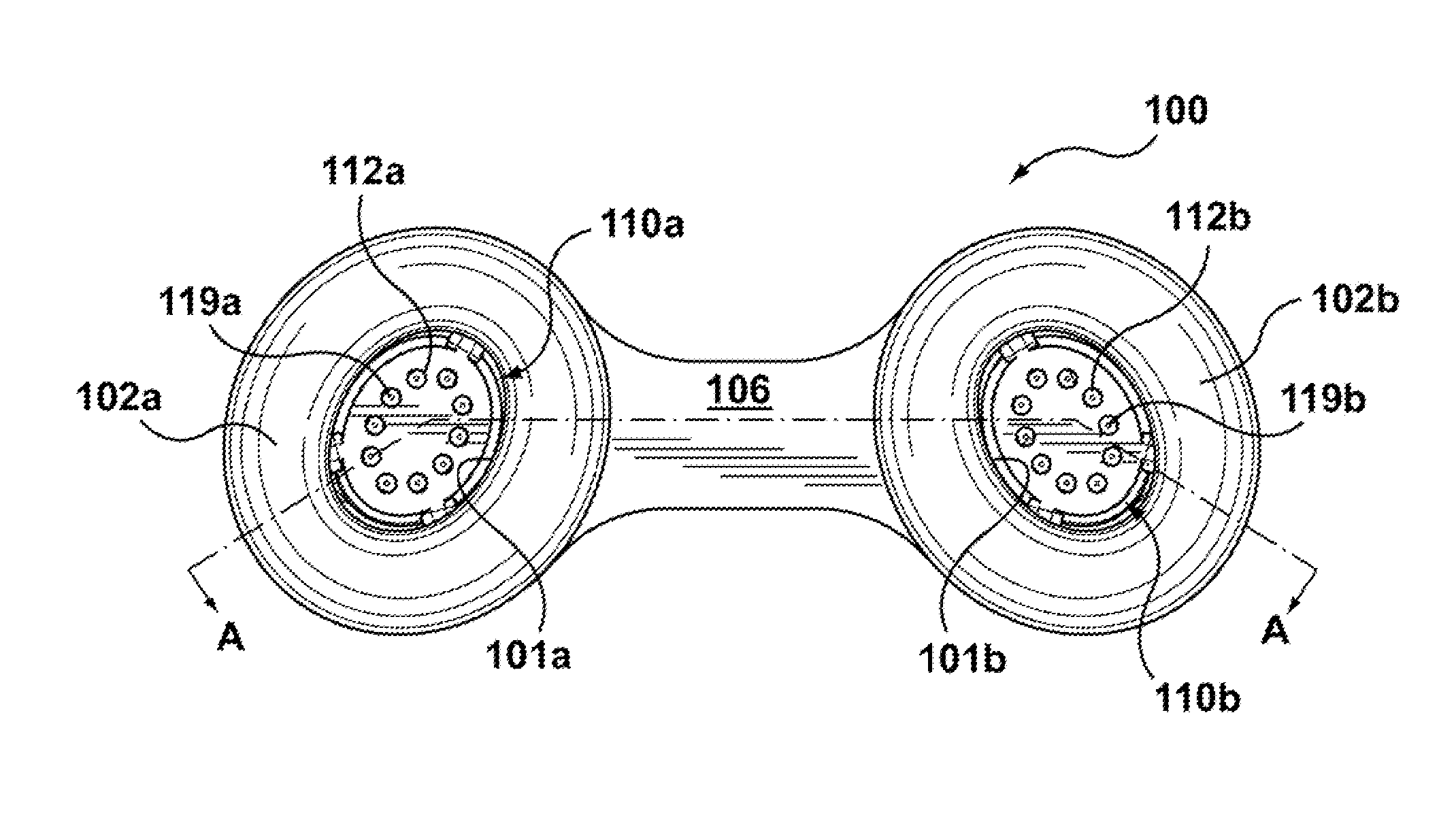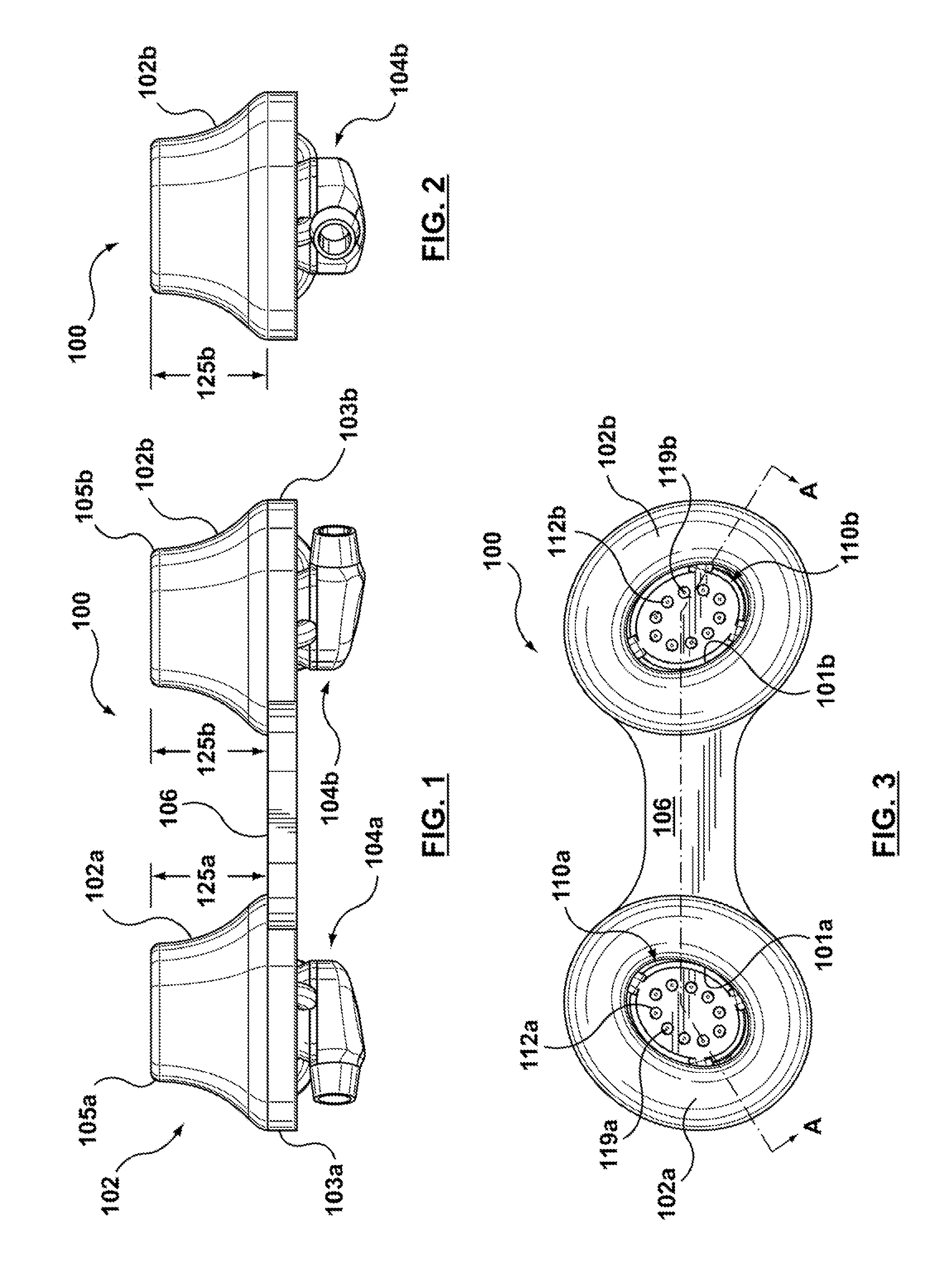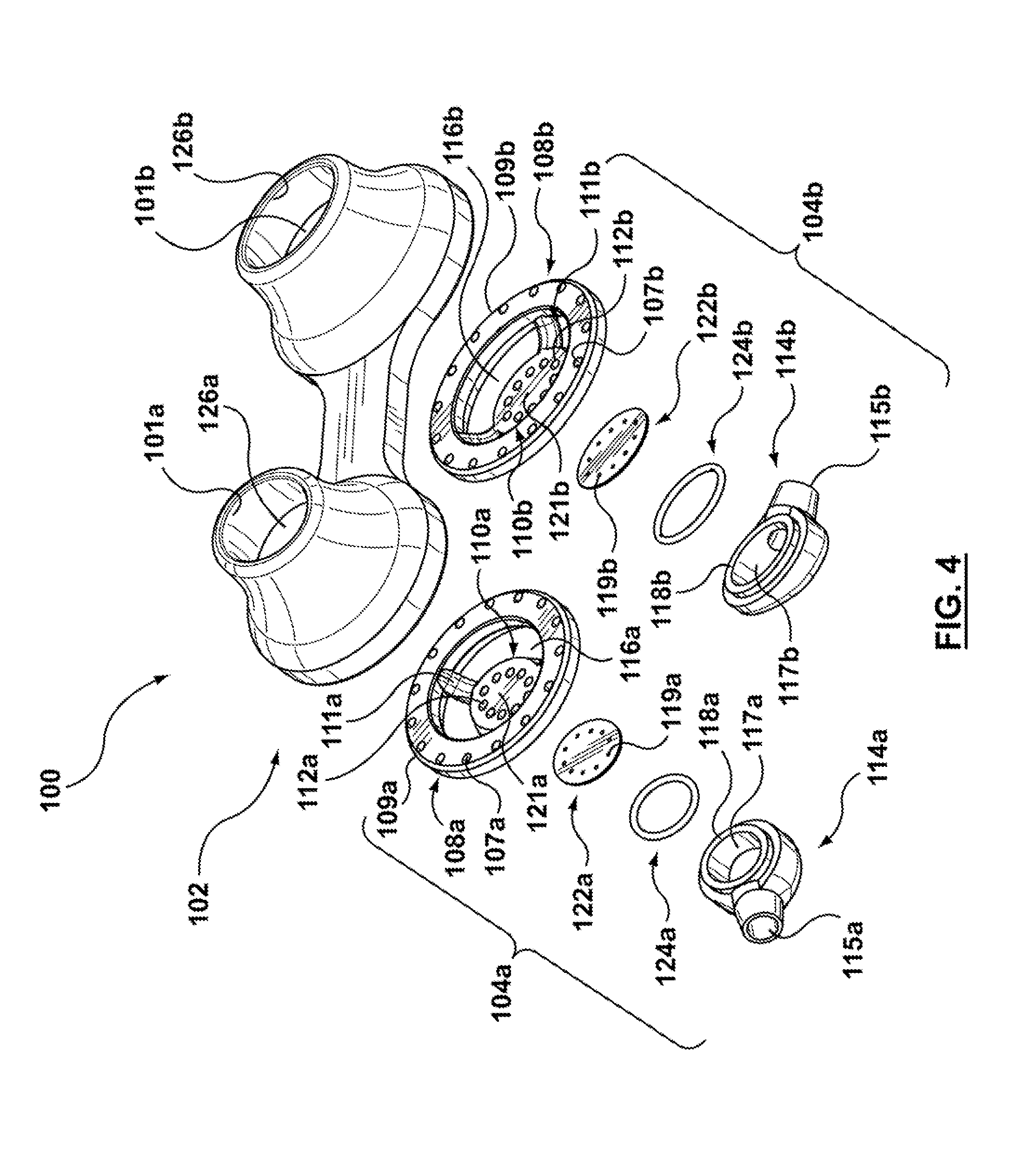Nasal interface apparatus and systems for use with a respiratory assist device
- Summary
- Abstract
- Description
- Claims
- Application Information
AI Technical Summary
Benefits of technology
Problems solved by technology
Method used
Image
Examples
Embodiment Construction
[0043]Specific embodiments of the present invention are now described with reference to the figures, wherein like reference numbers indicate identical or functionally similar elements. The terms “proximal” and “distal” are used in the following description with respect to a position or direction relative to the respiratory assist device. “Proximal” and “proximally” are a position near from or in a direction toward the respiratory assist device. “Distal” or “distally” are a position distant or in a direction away from the respiratory assist device.
[0044]The following detailed description is merely exemplary in nature and is not intended to limit the invention or the application and uses of the invention. Although the descriptions of embodiments hereof are in the context of treatment of a range of clinical syndromes that require respiratory assistance, the invention may also be used in any other therapies and / or situations where it is deemed useful. Furthermore, there is no intention ...
PUM
 Login to View More
Login to View More Abstract
Description
Claims
Application Information
 Login to View More
Login to View More - R&D
- Intellectual Property
- Life Sciences
- Materials
- Tech Scout
- Unparalleled Data Quality
- Higher Quality Content
- 60% Fewer Hallucinations
Browse by: Latest US Patents, China's latest patents, Technical Efficacy Thesaurus, Application Domain, Technology Topic, Popular Technical Reports.
© 2025 PatSnap. All rights reserved.Legal|Privacy policy|Modern Slavery Act Transparency Statement|Sitemap|About US| Contact US: help@patsnap.com



